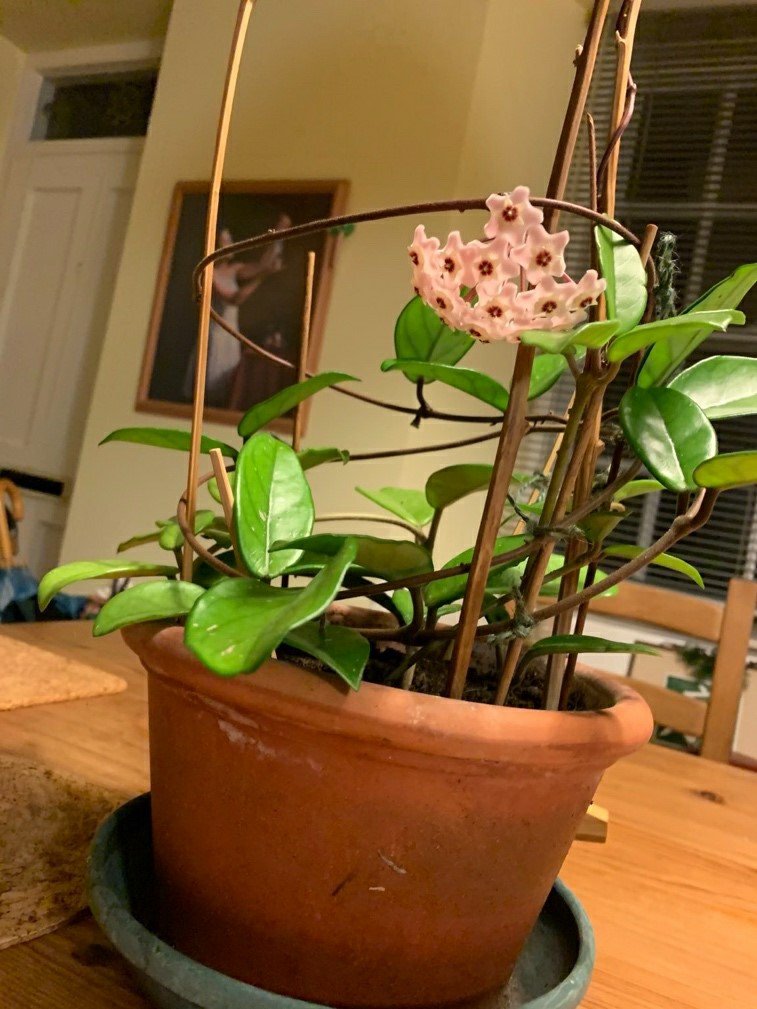Do nothing – then it blooms!
Lessons learned from the Hoya.
Photo above - Hoya in bloom in September 2021.
A few years ago, The Headmistress (my garden advisor) brought me a very plain plant with thick leaves in a pot, saying, “This conservatory is ideal. Just keep the blind down in the corner so that they are away from direct sunlight. You just do nothing for it. When it blooms, something like a tear drop comes out.”
I had no choice, but to just put the pot in the corner of the conservatory, as I was instructed to do.
Amazingly, over the next few days and weeks, the runner grew, and it got longer and longer.
The headmistress told me “You can cut it just above the shooting bud, and stick the runner into another pot. It will grow.”
And indeed, it grew! I ended up with other pots, one with just waxy leaves, and the other with three runners stuck into dry soil.
Both pots found themselves in different homes and are being cared for. When I passed on the pots to others, I repeated what the headmistress told me. “Do nothing.” But I added some extra information from the headmistress; a bathroom with regular steam could be ideal.
The runner of the remaining plant still grew and I did not know what to do with it. Then the clever headmistress arranged them into a spiral for them to keep on growing without taking too much space.
Yes, I could cope with that. Now I could truly ignore the plant! Now and then, when I felt like it, I gave a little water. That’s all.
Photo above - The cleaver headmistress arranged them to grow in a spiral way.
One day, I found a bunch of some plasticky things hanging down from the runner of the plant. They really seemed to have appeared from nowhere (as I was not observant at all) as if they had popped out from nothing. They were pinky hardy things which did not look real at all. A drop of water was hanging down from the centre of each flower.
Aha! This must be the flower the headmistress was talking about!
When I showed the bunch of flowers to the headmistress, she gave me more information. “It releases a beautiful scent in evening. Lick the water. It is sweet.”
So, I put a drop onto my nail, and licked it. It was pleasantly sweet. This was a huge discovery for me. Now I see how nature works. This is the nectar that all the bees and butterflies are mad about. I would behave like bees in the summer to get a suck of this!
For the first time, I looked up about the Hoya on the internet. I found that it is called “Sakura ran” in Japanese, which literally means “cherry orchid”; What an appropriate name!
As described on the internet, the flowers lasted for two weeks. It bloomed fully when I had guests from London as if the plant was welcoming them. I moved the plant from the conservatory to the kitchen table, so that it would be admired by more people. The colour of the leaves got darker, so it appeared the plant was happier with the steams from cooking. During the two weeks of blooming, whoever walked into the house were all encouraged to put the nectar on their nail to lick.
This experience with Hoya is, for me, a good example of the importance of “non-interference”, or 無為 ‘Wu Wei’ a Buddhism term meaning ‘non action’.
By not doing anything, it thrived!
In the past, I had tried to support two separate individuals from my kind heart, but it just led them to be in a more messy situation. It seems I just interfered with the arrangements in their lives.
Recently, someone asked me to help, but I did not see my role in the situation, so I said “No”. Several months later, I had an opportunity to see the person. She did not look bright, but she was definitely on the mend. She was looking within herself to search for her shortcomings. She told me “I tend to rely on others. This has been my weakness.” Wow!
My “No” to her was actually contributing toward her taking up her own path.
When I first saw the drops hanging down from the flowers of the Hoya, I thought they were the tears of the Divine, lamenting this horrible world. However, after I tasted the nectar, I realized they are just showing the blessings of nature.
Good job I did not interfere with the plant. They grow at their own pace and teach us that in nature, things will happen when the time is right.



